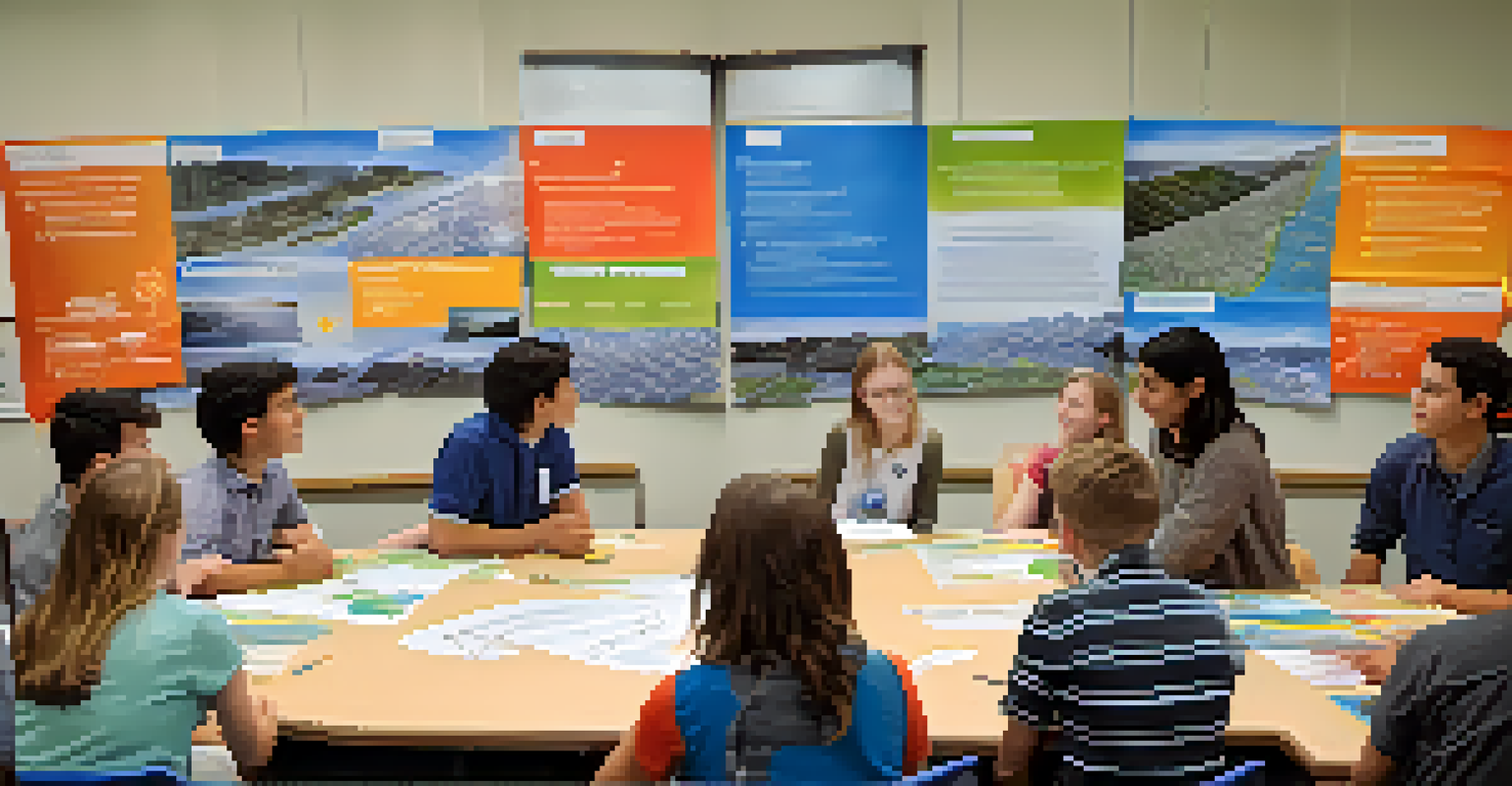Critical Thinking Through Interdisciplinary Science Projects

Understanding Critical Thinking in Education
Critical thinking is the ability to analyze information objectively and make reasoned judgments. It’s not just about what you know, but how you apply that knowledge to solve problems and make decisions. In education, fostering these skills is essential for preparing students for real-world challenges.
Critical thinking is the key to creative problem solving in business.
To understand critical thinking better, consider it like a mental toolbox. Just as a carpenter needs various tools to build a strong structure, students need diverse thinking strategies to tackle complex issues. This toolbox is filled with skills like analysis, evaluation, and inference.
When students engage in projects that require them to think critically, they learn to question assumptions and explore different perspectives. This process is vital, as it encourages them to become not just consumers of information but active participants in their learning.
The Role of Interdisciplinary Projects
Interdisciplinary projects combine knowledge from multiple fields, enriching the learning experience. For instance, a project that merges biology, technology, and environmental science can offer students a holistic view of ecological issues. This blending of disciplines fosters a deeper understanding of complex topics.

By working on interdisciplinary projects, students are exposed to various methods of inquiry and problem-solving techniques. This exposure encourages them to draw connections between seemingly unrelated concepts, thereby enhancing their critical thinking skills. It’s like seeing a puzzle from different angles until the picture becomes clear.
Critical Thinking Enhances Learning
Fostering critical thinking prepares students to tackle real-world challenges by applying knowledge effectively.
Moreover, these projects often require collaboration, pushing students to communicate and share ideas with their peers. This collaborative environment not only nurtures critical thinking but also cultivates important social skills, preparing students for teamwork in their future careers.
Engaging with Real-World Problems
One of the most effective ways to develop critical thinking is by engaging with real-world problems. Interdisciplinary science projects often tackle issues like climate change or public health crises, prompting students to think critically about solutions. When students see the relevance of their work, their motivation to learn increases.
Education is not the learning of facts, but the training of the mind to think.
For example, a project focused on water quality can involve chemistry, environmental science, and community activism. Students can analyze local water samples, research the impact of pollutants, and propose community solutions. This not only deepens their understanding but also empowers them to make a difference.
By grappling with these real-world challenges, students learn to think critically about the implications of their decisions. They begin to understand that solutions are rarely straightforward, requiring a nuanced approach that considers various factors.
Developing Collaboration and Communication Skills
Interdisciplinary projects inherently promote collaboration, requiring students to work together to achieve common goals. This teamwork mirrors real-world professional environments, where collaboration is often key to success. As students navigate group dynamics, they learn to communicate their ideas effectively.
For instance, during a group project on renewable energy, one student may focus on the scientific principles, while another researches economic implications. By sharing their findings and discussing their viewpoints, they develop a richer understanding of the topic and improve their communication skills.
Interdisciplinary Projects Boost Skills
Combining multiple disciplines enriches students' understanding and promotes collaboration, enhancing critical thinking.
These collaborative experiences teach students to appreciate diverse perspectives, helping them to think critically about their own views. As they learn to negotiate, debate, and present their ideas, they become more confident in their ability to engage with complex issues.
Fostering Creativity Through Interdisciplinary Learning
Critical thinking isn’t just about logic and analysis; it also involves creativity. Interdisciplinary projects encourage students to think outside the box, combining ideas from different fields to innovate solutions. This creative approach is essential for developing well-rounded critical thinkers.
For example, students might use artistic methods to present scientific data, making their findings more accessible. By integrating creativity into their projects, they learn to communicate complex ideas in engaging ways, which is a valuable skill in any field.
Moreover, when students feel free to explore their creative sides, they become more invested in their learning. This enthusiasm can lead to deeper engagement with the material, promoting a cycle of critical thinking and creativity that enhances their overall educational experience.
Assessment Strategies for Critical Thinking Skills
Assessing critical thinking skills in interdisciplinary projects can be challenging but is crucial for understanding student progress. Traditional tests often fall short, so educators are exploring alternative assessment methods. These can include reflective journals, presentations, and peer evaluations that provide insight into students' thought processes.
For example, a teacher might ask students to reflect on their contributions to a group project and how they overcame challenges. This self-assessment encourages students to think critically about their learning experiences and understand their strengths and areas for growth.
Real-World Engagement Motivates Students
Engaging with real-world problems increases student motivation and helps them understand the complexity of decision-making.
By focusing on process rather than just the final product, educators can better gauge students' critical thinking abilities. This approach not only helps in assessment but also reinforces the importance of reflection in the learning process.
The Future of Education Through Interdisciplinary Approaches
As the world becomes increasingly complex, the educational landscape must adapt to prepare students for future challenges. Interdisciplinary science projects represent a promising approach to developing critical thinking skills. By breaking down barriers between subjects, educators can provide a richer, more integrated learning experience.
Looking ahead, the emphasis on interdisciplinary learning is likely to grow. Schools and universities are recognizing that traditional methods are often insufficient for preparing students for the complexities of the modern world. As a result, we can expect to see more programs that foster collaboration, creativity, and critical thinking.

In this evolving educational environment, students will be better equipped to tackle global issues, innovate in their fields, and contribute meaningfully to society. By nurturing critical thinking through interdisciplinary projects, we’re not just preparing students for exams; we’re preparing them for life.